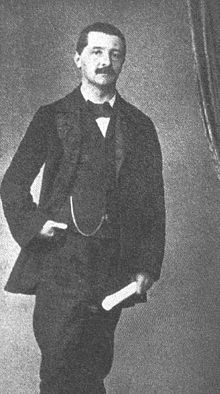Psalm 114 (Bruckner)
| Psalm 114 | |
|---|---|
| by Anton Bruckner | |

The young Bruckner
|
|
| Key | G major |
| Catalogue | WAB 36 |
| Form | Psalm setting |
| Composed | 1852: St. Florian |
| Dedication | Hofkapelmeister Ignaz Assmayr |
| Performed | 1 April 1906 by August Göllerich |
| Published | 1997 |
| Recorded | 1987 by Matthew Best |
| Vocal | SAATB choir |
| Instrumental | 3 trombones |
Bruckner's Psalm 114 in G major, WAB 36, is a psalm setting for five-part mixed choir (SAATB) and three trombones. It is a setting of verses 1 to 9 in German of Psalm 116, which is Psalm 114 in the Vulgata.
The work was composed in 1852 in St. Florian. Bruckner dedicated the work to Hofkapelmeister Ignaz Assmayr for the celebration of his name-day. No performance occurred during the composer's life. The work was premiered by August Göllerich on 1 April 1906. It was first recorded by Matthew Best in 1987 and edited by Paul Hawkshaw in 1997.
Dank für Rettung aus großen Gefahren (Thanks for salvation from great perils)
"The music is at first of an impressive archaic austerity, bare in harmony, and strikingly simple in texture. E minor is the opening key, but G major ultimately dominates." The structure of the psalm, which is quite simple in concept, is grounded on liturgical practice. The composition begins with a four-phrase, homophonically constructed Alleluja, which serves as an antiphon to the psalm setting. The individual verses, with the exception of verses seven and eight, are clearly separated by strong cadences or a few beats of silence. "[Bruckner] relied to the trombones to reinforce contrasts delineated by the silences that would become so poignant in his later music." The trombones are so reinforcing the contrasts between "Es umgaben mich die Schmerzen des Todes" (shift to minor) and "Kehre zurück meine Seele" (return to major). The truly inspired work, which projects a profound understanding of the text, captivates the ear with interesting harmonies and varied timbres and textures. The final words of verse eight ("meinen Füße vom Falle."), which are set in a two-voice canon over a dominant pedal, provide an effective bridge to the large-scale, five-voice double fugue, which ends with a powerful unison on "im Lande der lebendigen."
...
Wikipedia
